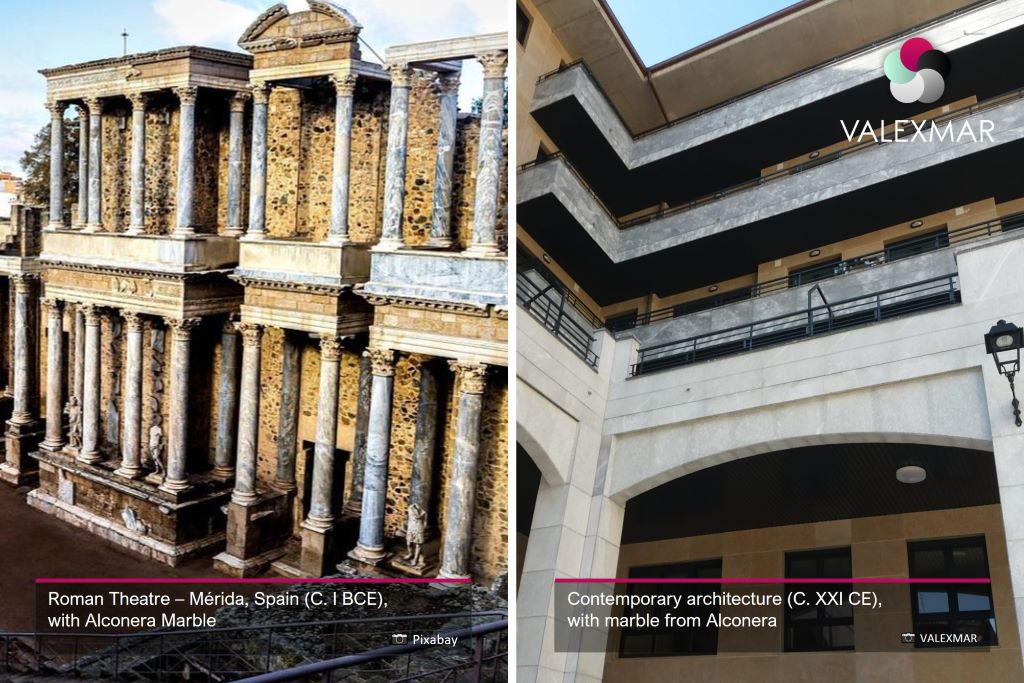Two Current Debates on the Future of Public Architecture in the U.S.
Donald Trump’s recent executive order on federal architecture has reignited a debate that transcends borders: Who decides what public architecture should look like? And even more: Are noble materials like marble, limestone, and granite a fossilized legacy, or can they be protagonists of 21st-century architecture?
The Polarizing Decree: “Making Federal Architecture Beautiful Again”
On August 28, 2025, President Trump signed a new executive order establishing classical and traditional style as the preferred approach for federal public buildings, especially in Washington D.C. This is a reissue of the original 2020 directive (EO 13967), which Joe Biden revoked shortly after taking office in February 2021.
The official justification is clear: to restore “architectural greatness,” ennoble public space, and ensure that federal buildings inspire civic cohesion.
Trump openly criticizes modern and brutalist styles, considering them “unpopular and undignified.” The order requires the General Services Administration (GSA) to prioritize teams with experience in historical architecture and demands presidential justification if a project deviates from the classical canon.
Why Did Biden Revoke the Original Order?
Biden’s 2021 revocation was no accident. His administration defended freedom of choice in architectural design, rejecting the imposition of a single style.
The American Institute of Architects (AIA) celebrated the decision, arguing that architectural pluralism reflects cultural diversity, drives innovation, and better responds to contemporary environmental challenges.
For critics of Trump’s approach, imposing an aesthetic canon by presidential decree is an anachronism that limits creativity and turns architecture into a political instrument.
Debate 1: Imposed Classicism or Creative Freedom?
Here two irreconcilable visions clash regarding the State’s role in public architecture.
Defenders of classicism argue:
- Symbolic power: Historical languages confer solemnity and permanence. Citizens identify Doric columns and pediments with the foundational values of Western democracy.
- Economic opportunity: The order reactivates the natural stone industry. Materials like marble, limestone, and granite become protagonists again in public tenders.
- Social cohesion: A recognizable architectural language can unite a fragmented society, offering shared visual references.
Detractors respond:
- Political interventionism: Architecture shouldn’t be decided by decree. As a recent critical analysis from El País (Spain’s leading newspaper) points out, interventionism in artistic creation belongs to other times and political systems.
- Functional limitation: Contemporary architecture must respond to challenges like energy efficiency, universal accessibility, and flexibility of use. Historical replicas don’t always guarantee this.
- Cultural diversity: Imposing a single style denies the richness of architectural expressions that reflect a society’s plurality.
Arquitectura Viva and Focus Piedra (leading Spanish portals in construction and natural stone) have extensively documented how this debate divides the profession and questions the balance between heritage and innovation.
Which opens a second can of worms:
Debate 2: Does Marble Only Transfer Historical Legacy or Does It Adapt to the 21st Century?
The second major question is both technical and aesthetic: Are noble materials condemned to repeat formulas from the past, or can they be reinvented?
Global Evidence Suggests They Can Be Reinvented
In Europe, recent projects in Paris, London, Brussels, and Berlin demonstrate how marble, limestone, and granite reappear with innovative finishes: stain-resistant surfaces, “raw finish” textures, ultra-light laminates. Tradition merges with modernity without renouncing either.
In the Middle East, cities like Abu Dhabi, Dubai, and Doha incorporate travertine, onyx, and local limestones in monumental architectures and futuristic airports. Traditional geometric patterns are reinterpreted with CNC cutting technology and LED backlighting.
In Asia, China and Japan combine marble, volcanic stone, and jade in government headquarters with minimalist and eco-efficient solutions. The dialogue between contemporary aesthetics and millennial materials is evident.
The revaluation of noble materials connects with the global search for durability, authenticity, and quality. Today it manifests in diverse applications, textures, and forms adapted to the present.
Replica or Reinterpretation?
The problem isn’t marble. The problem is how it’s extracted and used.
A Corinthian stone column can be as anachronistic as it is innovative, depending on its context and design.
Noble materials have no ideology; architectural projects with style imposed by law do.
As Inmobiliare points out in its editorial supporting the order, natural stone offers indisputable technical qualities: secular durability, low maintenance, thermal comfort, zero toxicity. But these virtues don’t depend on repeating the Parthenon. They can be applied to a LEED-certified library, a parametric pavilion, or a bioclimatic metro station.
Return to the Classics or Contemporary Reinvention?
The real debate isn’t marble yes or marble no.
It’s how and why we choose materials.
Monumentality can ennoble public space, but it can also oppress, regardless of the materials used—natural or synthetic.
Innovation can liberate creativity, but it can also generate ephemeral and decontextualized architectures.
Perhaps the answer lies in a middle ground:
- Noble materials reinterpreted with current technology.
- Natural stone that dialogues with heritage without renouncing the future.
Which Side Are You On?
- Classicism by decree or creative freedom?
- Historicist replica or contemporary reinterpretation?
The debates are open.
A Final Reflection from Spanish Marble Territory
While these debates cross oceans, in Spain there are centuries-old quarries that have supplied both historical monuments and contemporary architecture projects.
VALEXMAR, with its five varieties of marble, exemplifies this duality: extractive tradition and adaptation to current design demands.
Right now, the company has opened a sealed-bid sale for its quarry, an opportunity for those who see in noble materials not only the past but also the future.
Because in the end, what endures is not the style, but the quality of the material and the intelligence of its application.
Referenced Links and Sources:
- 2025 Executive Order: Making Federal Architecture Beautiful Again – White House
- Original Executive Order EO 13967 (2020) – Federal Register
- Revocation by Joe Biden (2021) – NPR
- AIA (American Institute of Architects)
- Critical analysis – El País
- Statements of support – Inmobiliare
- Coverage – Arquitectura Viva
- Coverage – Focus Piedra

